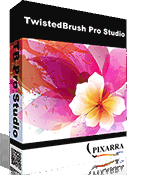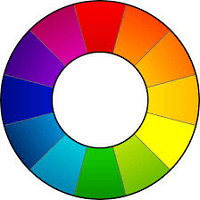Yes, most photo editing software may be accessed from numerous devices and platforms. This is made feasible by cloud-based storage and synchronization services, which allow users to access their photos and modified images from any location with an internet connection. Furthermore, several picture editing software companies have mobile apps for iOS and Android smartphones, making it easier to edit photos on the go. However, before purchase, you should ensure that the software is compatible with your specific devices and platforms.
List of 20 Best Photo Editing Software
Pixlr is a photo editing solution for professionals, right at your fingertips. With this free software, you can easily fix lighting issues, remove blurriness and red-eye, and edit objects with ease. Plus, with its wide range of filters, Pixlrs photo...Read More Pixlr
PhotoDirector, developed by CyberLink is a photo editing software for small and medium-sized businesses, large enterprises, and creative agencies. The software is equipped with a wide range of features that allow for color correction, image editing,...Read More PhotoDirector
Roundme is virtual reality software that lets you effortlessly create and share 360-degree images and panoramas. Connect with a global community of users as you showcase stunning locations and immersive visuals on our platform. Elevate your virtual t...Read More Roundme
PhotoPad is a photo editing software from NCH, is designed to meet the demands of SMEs, Enterprises, and Agencies. Boasting advanced tools like color correction, image manipulation, alignment and straightening, and digital retouching, PhotoPad offers...Read More PhotoPad
Paint.NET is a image and photo editing software that is compatible with Windows. Its impressive range of features includes layers, unlimited undo options, and special effects, making it the perfect tool for editing and enhancing images. With a thrivi...Read More Paint.NET
TwistedBrush Pro Studio is a software for digital art enthusiasts. Its wide range of natural media painting tools, photo editing functions, and illustrative options make it the perfect choice for bringing your imagination to reality. Create stunning...Read More TwistedBrush Pro Studio
Zoner Photo Studio X is a alternative to Lightroom. With a wide range of RAW photo editing and organizing tools, it streamlines your workflow and simplifies tasks like image culling and batch processing. Bid farewell to lengthy turnaround times and w...Read More Zoner Photo Studio
Mindesk is software that allows users to efficiently edit photos and create animated designs, seamlessly synchronized with 3D CAD projects. Developed specifically for Mc Neel Rhinoceros, Mindesk offers a user-friendly interface and effortless navigat...Read More Mindesk
DxO PhotoLab - a complete photo editing software designed for SMEs, Enterprises, and Agencies. This comprehensive solution provides an array of tools such as Color Correction, Image Editing, Alignment and Straightening, and Digital Retouching, cateri...Read More DxO PhotoLab
Raw Therapee is a photo studio software that provides advanced demosaicing algorithms and a variety of color and detail editing tools. It allows you to create professional-quality images without any cost, turning low-quality RAW images into stunning...Read More Raw Therapee
SoftOrbits Photo Retoucher is a photo editing software for achieving flawless images. This user-friendly tool allows you to easily remove unwanted objects or people from your photos, without compromising on quality. Say goodbye to the hassle of delet...Read More SoftOrbits Photo Retoucher
Deep Art Effects - the revolutionary software that transforms ordinary photos into stunning masterpieces through the power of AI technology. With features such as offline processing, intelligent scaling, and customizable filters, this software offers...Read More Deep Art Effects
GIMP is a powerful, versatile image editing software perfect for professionals in fields like graphic design, photography, and science. It is fully compatible with GNU/Linux, OS X, and Windows operating systems. GIMP offers a wide range of tools to e...Read More GIMP
InPixio is solution for seamlessly transferring photos and videos from your phone to your computer. Say goodbye to tangled cables and complicated cloud services. With our robust editor, you can easily create stunning images with a variety of unique e...Read More InPixio
ON1 Photo RAW is a photo editing software for SMEs, Enterprises, and Agencies. Enjoy a comprehensive set of advanced features including color correction, image editing, alignment, straightening, and digital retouching – all in one convenient p...Read More ON1 Photo RAW
PixTeller is a tool for crafting stunning images and animated videos with ease. Choose from a vast library of customizable templates and advanced editing options to bring your ideas to life effortlessly. Join our creative community for unlimited insp...Read More PixTeller
openMVG is a open-source library tailored for 3D reconstruction utilizing multiple images. It boasts advanced capabilities in photogrammetry and offers robust solutions for structure-from-motion and multi-view stereo. Perfect for computer vision and...Read More openMVG
the Metadata Converter - a must-have tool for effortless photo management. With its batch editing capability, you can easily modify EXIF, IPTC, XMP, date, and GPS information. Simplify your process by renaming photos and adding personal copyright wit...Read More Metadata Converter
Capture One Pro is a Photo Editing tool that caters to the needs of SMBs, enterprises, and agencies. It offers a comprehensive range of features, including color correction, image editing, alignment, straightening, and digital retouching, to streamli...Read More Capture One Pro
1min.AI is a AI solution for your business needs. Our comprehensive platform offers a wide range of features and models, eliminating the need for multiple tools and subscriptions. Enhance your workflow and maximize the power of artificial intelligenc...Read More 1min.AI
Learn More About Photo Editing Software
- What Is Photo Editing Software?
- What Are The Recent Trends In Photo Editing Software?
- Benefits Of Using Photo Editing Software
- Important Factors To Consider While Purchasing Photo Editing Software?
- What Are The Key Features To Look For In Photo Editing Software?
- Why Do Businesses Need Photo Editing Software?
- How Much Time Is Required To Implement Photo Editing Software?
- What Is The Level Of Customization Available In Photo Editing Software?
- Which Industries Can Benefit The Most from Photo Editing Software?
- Conclusion
What Is Photo Editing Software?
Photo editing software is a useful tool for photographers, graphic designers, and professionals to improve and manipulate digital photographs. It enables users to edit, enhance, and improve the quality and appearance of images using a number of technical functions and creative tools, making it indispensable software for anyone working in the visual arts business.
Photo editing software has a wide range of functionality, from simple cropping, resizing, and brightness and contrast adjustments to more advanced choices like as retouching, color correction, and special effects. It enables users to transform regular photos into spectacular and visually appealing images, making it an excellent tool for both beginners and experts.
Adobe Photoshop, Lightroom, Corel PaintShop Pro, and GIMP are some of the most popular photo editing software options available today. These apps have a user-friendly interface and a plethora of capabilities to suit different levels of skill and budgets. For photographers, photo editing software allows them to enhance their photos and develop a distinct style that distinguishes them from others in the industry.
Graphic designers can use it to modify photos for their creative endeavors and incorporate visual components into their designs. Businesses can utilize picture editing software for product photographs, marketing materials, and branding. When selecting photo editing software, you should evaluate its compatibility with your computer's operating system, the level of technical ability necessary, and the pricing.
Some software requires a one-time purchase charge, while others are subscription-based. It is also beneficial to study reviews and compare features to determine the best option for your needs. Overall, photo editing software is a worthwhile purchase for anyone who wants to improve their visual material and produce professional-quality images. With its comprehensive capabilities and user-friendly interface, it has become a must-have digital tool for any visual artist or business.
What Are The Recent Trends In Photo Editing Software?
The field of photo editing software is continually changing to fulfill the demands of photographers and graphic designers. In recent years, this category has seen numerous notable movements that have had a significant impact on the market. These trends can help buyers make informed selections about which type of picture editing software is appropriate for their requirements. One of the most prominent trends is the transition to cloud-based applications.
Many companies now provide online picture editing systems, allowing customers to access and edit their photos from anywhere with an internet connection. This trend provides a practical and adaptable choice for busy professionals or amateurs on the move. Furthermore, it enables simple collaboration and file sharing with team members or clients. Another trend in photo editing software is an increased emphasis on artificial intelligence (AI) and machine learning technology.
This technique is being included into photo editing software to simplify and accelerate the editing process. These apps can automatically modify lighting, colors, and other variables to improve images with little input from the user. This trend has made photo editing more accessible to people with little technical skills, making it a popular choice for novices. Mobile photo editing apps have also become more popular.
With the rise of smartphones and social media, many consumers want quick and easy ways to edit and share images while on the go. These mobile apps make it easy to edit images and publish them on social media networks without the need for a computer or specialist software. Furthermore, there is an increasing demand for photo editing software that includes a variety of features and capabilities.
As the area of photography and design evolves, consumers seek software that can handle a wide range of jobs, including picture retouching, graphic design, and video editing. This tendency has resulted in the creation of all-in-one photo editing suites that meet a wide range of user needs.
Benefits Of Using Photo Editing Software
Both amateur and professional photographers now rely heavily on photo editing software. With technological improvements, these software packages have grown to include a diverse set of features and capabilities, making them an excellent investment for anyone wishing to improve their images.
Here are some of the main advantages of using photo editing software.
1. increase Image Quality: One of the most common reasons individuals use photo editing software is to increase the overall quality of their photos. These programs provide a variety of capabilities to improve the visual attractiveness of a photo, including altering brightness and contrast, fixing color, and deleting undesired components.
2. Save Time And Effort: Previously, altering images required hours of physical labor and a trained hand. However, with photo editing software, operations that would have taken hours to perform may now be completed in a matter of clicks, saving valuable time and effort.
3. Bring Creativity To Life: Photo editing software empowers users to express their creativity by offering a variety of effects, filters, and tools for transforming images into one-of-a-kind and engaging works of art. The options for adding text, making collages, and applying special effects are unlimited.
4. Correct Imperfections: Even the best photographers take images with flaws, such as a blemish on a portrait or a distracting object in the background. Photo editing software includes capabilities such as spot healing and clone stamp to correct flaws and generate immaculate photographs.
5. User-Friendly Interface: Many picture editing software applications have user-friendly interfaces and tutorials to help beginners learn and utilize the software. With some effort, anyone can become a proficient photo editor.
6. Versatility: Photo editing software may be utilized for a wide range of tasks, including web design, graphic design, and even print products such as brochures and business cards. Its adaptability makes it an important tool for a variety of professionals, including web designers, marketers, and content providers.
7. Constantly Evolving: As technology advances, photo editing software evolves, adding new features and improvements. Purchasing a one-time license or a subscription grants consumers access to updates, guaranteeing that their images are always ahead of the curve.
Important Factors To Consider While Purchasing Photo Editing Software?
When it comes to selecting picture editing software, there are various variables to consider to guarantee you receive the finest solution for your requirements. Photo editing software can vary widely in terms of functionality, pricing, and user-friendliness, so it's critical to thoroughly investigate and compare your options.
Here are the essential aspects to consider while making your decision:
1. Features And Tools: The first and most crucial thing to think about is the software's features and tools. Every photographer or photo editor will have unique wants and preferences, therefore it is critical to select software that can fulfill your personal objectives. Look for features like layers, filters, color correction, and retouching tools, as well as any other tools you may require for your photography style or niche.
2. User Interface: The user interface greatly influences your overall experience with the product. You want software that is straightforward to use and understand, even for beginners. Some applications may have a steeper learning curve than others, so test the software's free trial or demo version to see if the UI is intuitive and functional for you.
3. Compatibility: Make sure the software is compatible with your computer's operating system. Some software may only operate with certain operating systems, so double-check to avoid compatibility difficulties. Furthermore, if you operate in a team or collaborate with other photographers, look into software that provides for easy file sharing and compatibility with other software applications.
4. Cost: Pricing is an important issue to consider when purchasing any product. Photo editing software can cost anywhere from free to hundreds of dollars, so it's crucial to set a budget and select software that works inside it. Keep in mind that more expensive software may include more advanced features and technical assistance, whereas free software may have less functionality and adverts.
5. Support And Updates: Technical support and frequent updates are required for any software to function properly. Look for software that provides solid customer assistance, whether by email, chat, or phone. It's also critical to select software that receives regular upgrades to repair bugs, enhance performance, and introduce new capabilities.
What Are The Key Features To Look For In Photo Editing Software?
When it comes to selecting the best picture editing software, it can be difficult to sort through the different options available on the market. But don't worry; we've developed a list of crucial qualities to consider while making your pick. These features will not only improve your editing experience, but will also ensure that you get the most value for your investment.
1. User-Friendly Interface: A user-friendly interface is essential for a smooth editing experience. Look for software with a straightforward and easy-to-use interface, including tools and menus.
2. Editing Tools: One of the most significant elements to evaluate is the software's selection and quality of editing tools. Cropping, color correction, resizing, and retouching are some of the most important tools to consider.
3. Filters And Effects: A good picture editing program should include a variety of filters and effects to help you improve your images. A varied variety, ranging from basic filters to advanced creative effects, will enable you to add distinctive and professional touches to your images.
4. Compatibility: Check if the software is compatible with your computer's operating system. In addition, seek for software that supports a variety of file types, enabling versatility and flexibility in your editing process.
5. Speed And Performance: No one enjoys waiting for their photographs to load and render during the editing process. Look for software with fast processing rates and efficient performance to save time and frustration.
6. Batch Processing: If you work with a lot of photographs, look into software that allows you to batch process them. This tool lets you to make the same modifications to numerous photographs at once, saving you time.
7. Support And Tutorials: Some picture editing software includes built-in tutorials and instructions to help you learn the ropes quickly. In addition, make sure that the software provides solid customer assistance in the event that you run into any problems or have any inquiries.
8. Sharing Options: Once you've edited your images, you'll want to share them with friends and family. Look for software that provides a variety of sharing options right from the platform, such as social network integration or email.
Why Do Businesses Need Photo Editing Software?
In today's digital world, organizations rely heavily on visual content to communicate and market. With the advent of social media and internet platforms, having high-quality photographs has become critical for businesses to differentiate themselves and attract clients. Here's where photo editing software comes in. Photo editing software enables organizations to enhance, edit, and change images based on their individual requirements.
This could include modifying colors, adding filters, or altogether changing the image to match their brand's design. Furthermore, photo editing software enables the development of graphics and visual content, which is essential for businesses that require logos, adverts, or product photos. It eliminates the need for businesses to engage a professional graphic designer, saving them both time and money.
Photo editing software not only allows businesses to create and enhance photographs, but it also saves storage space. Images can be compressed while maintaining quality, making it easier to store and transfer huge files. Furthermore, businesses can employ photo editing software to boost their internet visibility. Businesses may attract more clients and differentiate themselves from the competition by developing visually appealing and professional-looking photos.
Finally, photo editing software enables businesses to keep a consistent brand image throughout their marketing materials. Businesses can develop recognized and memorable brand identities by using consistent editing techniques and filters. Finally, photo editing software is a must-have tool for organizations that want to generate, edit, and improve visual content. It not only saves time and money, but it also allows firms to stand out and maintain a consistent brand image in today's competitive digital environment.
How Much Time Is Required To Implement Photo Editing Software?
Photo editing software may significantly improve the quality of your photographs and elevate your photography to the next level. As a potential buyer, you should be aware of the time commitment required to successfully integrate and use picture editing software. The amount of time required varies based on the complexity of the software and your degree of expertise, but here are some general suggestions to help you plan your photo editing trip.
First and foremost, devote some time to studying the ins and outs of the software. This could include reading instructions, viewing internet videos, or enrolling in a course. This first learning period might last anywhere from a few hours to a few weeks, depending on the intricacy of the software and your availability. However, the time invested in understanding the software will pay off in the long term by allowing you to use it more efficiently and effectively.
Once you have a basic understanding of the software, you may begin utilizing it to edit your photographs. The length of time necessary for each editing session will vary depending on your project and the number of modifications you wish to make. Cropping or altering colors are simple adjustments that may be completed in a matter of minutes, whereas more complicated edits like compositing or creating special effects can take hours.
It is crucial to remember that editing is a creative process that may require some trial and error to get the desired outcome. It's also worth noting that the time required for editing varies depending on how many photographs you have to edit. If you are editing a large number of photographs, it may take some time to make consistent changes to each one.
Some software also has batch editing tools, which can save you time by letting you to make the same adjustments to numerous photographs at once. Finally, continual practice and experimentation with the software is required to increase your skills and speed. As you grow more comfortable with the software and its functions, the amount of time spent editing will decrease dramatically.
What Is The Level Of Customization Available In Photo Editing Software?
Photo editing software provides a variety of tools and capabilities for enhancing and manipulating images based on the user's preferences. The extent of customization varies with software, with some offering a minimal set of capabilities and others providing comprehensive customization possibilities. The level of customisation available in photo editing software is an important consideration when choosing a purchase. Most photo editing software includes basic adjustment settings like brightness, contrast, and saturation.
These tools are appropriate for novices or basic edits. However, for more complex editing, applications such as Adobe Photoshop and GIMP provide numerous adjustable features. These include layers, masks, and blending modes, which enable users to make detailed and exact changes. Another major component of customisation is the presence of keyboard shortcuts in photo editing software.
These shortcuts make the editing process faster and more efficient by allowing users to rapidly access and use their chosen tools without having to explore menus. Professionals choose software with a diverse set of keyboard shortcuts, like as Lightroom and Capture One. Some photo editing software also allows users to create their own presets or filters, which can then be saved and used to their photographs.
This level of personalization is useful for photographers who wish to retain a consistent look in their images or have a distinct style. This functionality is included in software such as Luminar, ON1, and Affinity Photo, providing users with greater flexibility and creative freedom over their adjustments. Finally, photo editing software's level of customisation is determined by its user interface.
Some tools, such as Canva and PicMonkey, are designed for beginners with a basic and user-friendly interface, but Photoshop and Corel PaintShop have a more complex interface that may require some study. It is critical to select software that is appropriate for your level of skill and provides sufficient customization to satisfy your editing requirements.
Which Industries Can Benefit The Most from Photo Editing Software?
Photo editing software may be a useful tool in a variety of industries, making it an adaptable investment for any company or individual trying to improve their visual material. However, certain businesses may profit more from photo editing software than others.
Here are the sectors that will gain the most from adding photo editing software into their workflows.
1. Advertising And Marketing: In the fast-paced world of advertising and marketing, graphics are critical for capturing the audience's attention and effectively communicating the message. Photo editing software allows specialists in this business to easily produce eye-catching graphics, retouch product photographs, and build visually appealing commercials that stand out from the crowd.
2. Photography: Photo editing software is an absolute must-have for photographers. This software improves the quality of images by altering exposure and color levels, erasing defects, and adding dazzling effects. It also allows photographers to express their individuality and personal flair through their work.
3. E-commerce: E-commerce enterprises rely largely on product images to entice clients and generate sales. Photo editing software allows them to improve the appearance of their product photographs, remove distracting backdrops, and establish a professional and consistent style across all of their products. This helps to create customer trust and increases conversion rates.
4. Graphic Design: Photo editing software helps graphic designers develop visually appealing designs for a variety of tasks, including logos, brochures, posters, and more. These tools include a diverse set of capabilities, filters, and effects that enable designers to bring their visions to life and create high-quality, professional-looking designs.
5. Publishing And Printing: Whether you're producing book covers, magazines, or newspapers, photo editing software is essential for the publishing and printing industries. It aids in the enhancement of the photos used in these publications, ensuring that they are of high quality and visually appealing. This, in turn, attracts readers and increases the publications' influence.
Conclusion
After thoroughly researching the features, pros, and disadvantages of various picture editing software, it is clear that each one has distinct benefits and advantages. However, when it comes to selecting the best one for your individual requirements, there are a few important variables to consider. First, think about your level of knowledge and the complexity of the software. If you are a newbie, seek for user-friendly interfaces and intuitive tools that are simple to use.
If you are a professional with sophisticated editing skills, choose software with a variety of features and complex settings. Second, consider the type of photography or editing you specialize in. Some applications may be more suited to portrait retouching, whereas others may excel at landscape editing. To get the most out of its features, use software that is tailored to your individual requirements.
Next, consider whether the software is compatible with your device and operating system. To avoid future technical troubles, choose software that is compatible with your device. Additionally, keep an eye on the cost alternatives and select a software that suits your budget while also providing the capabilities you desire. Some software allows for one-time purchases, while others need a monthly or yearly membership price.
Before you make a selection, consider the cost-effectiveness of each option. Finally, read evaluations and user experiences to better grasp the software's performance and dependability. This will allow you to make an informed selection and avoid any regrets after the purchase. Ultimately, the best picture editing software for you will be determined by your individual requirements, talents, and budget.
By considering these crucial elements and thoroughly investigating your alternatives, you may select the ideal program to help you elevate your photography to the next level. Keep in mind that, while features and tools are vital, you should also choose software that you are comfortable and competent with. With the correct picture editing software, you can improve your images, express your creativity, and bring your idea to life.
Photo Editing Software FAQ's
Can Photo Editing Software Be Accessed Across Multiple Devices And Platforms?
Is Photo Editing Software Future-Proof and Adaptable To Emerging Technologies Like AI, Blockchain Or IoT?
Yes, most photo editing software is future-proof and adaptable to emerging technologies such as artificial intelligence, blockchain, and the Internet of Things. In reality, several programs already use these technologies to improve editing capabilities, such as leveraging AI for facial recognition and incorporating blockchain for safe storage and content security. As technology advances, photo editing software will grow and adapt to meet the demands of photographers and graphic designers.
Is There A Free Trial Offered To Assess Photo Editing Software Before Committing?
Yes, many photo editing software packages provide a free trial period that allows customers to evaluate their features before committing to purchasing the full version. This enables users to evaluate the software's user interface, tools, and general functionality to determine whether it fulfills their requirements and preferences. Free trials normally last 7 to 30 days and can be accessed by downloading the program from the company's webpage. Adobe Photoshop, Canva, and GIMP are some of the most popular photo editing tools with free trial options.
Does Photo Editing Software Offer Data Security Features And Meet Regulatory Compliance Standards?
Yes, many photo editing software packages have data security measures to ensure the safety and privacy of user information. These could include encryption, safe cloud storage, and password protection. In addition, some software may meet regulatory compliance standards, such as HIPAA and GDPR, to protect sensitive information. It is critical to investigate the individual characteristics of any software to establish its level of data security and compliance.
Can Photo Editing Software Integrate Seamlessly With Existing Tools And Platforms?
Yes, today's photo editing software is designed to work seamlessly with existing tools and platforms. This covers widely used graphic design and video editing tools, as well as social media platforms and website builders. Photo editing software, with features such as multi-platform compatibility and easy file sharing, can help you optimize your workflow and incorporate modified photographs into your existing projects.






















